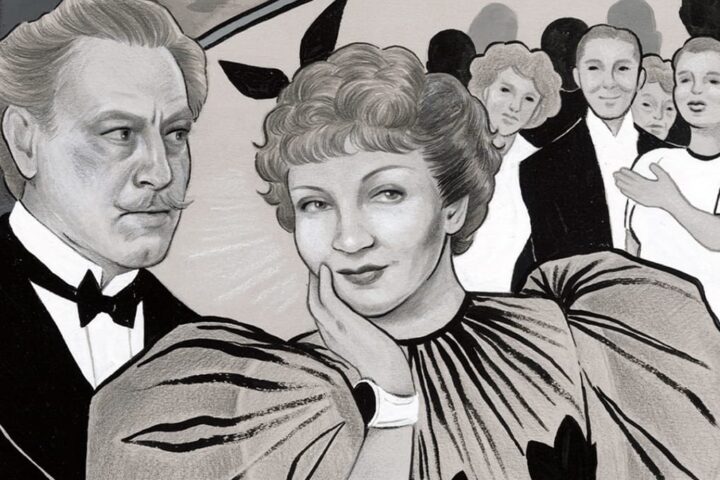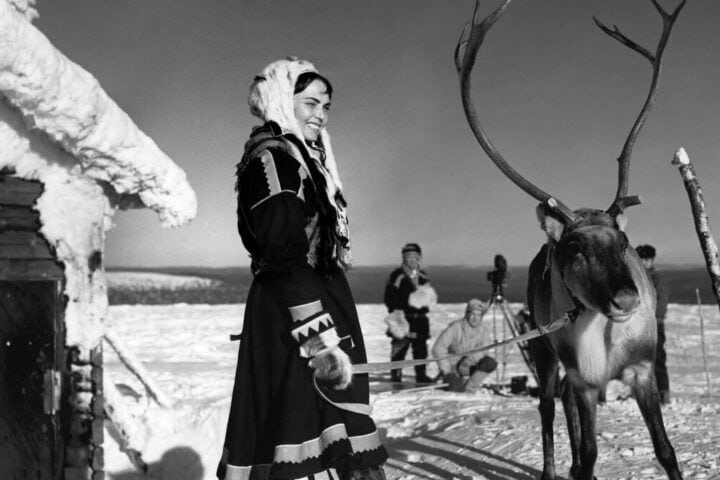![]() The second season of Night Gallery entered the 1971-72 television season with a full order of 22 episodes, a significant increase from the six episodes that comprised its abbreviated first season. Like that season, each episode is composed of short vignettes, each with its own distinctive vision, created by different teams of writers and directors, for a total of 62 segments. Given the inherently uneven nature of anthology horror shows, not to mention the harried process of TV production, what’s remarkable about the second season is how many of these individual segments still stand out. They run the gamut in quality from solidly effective to truly exceptional, delivering a wide variety of unsettling moods and chilling resolutions. Alas, the bane of the season remains its frequent reliance on short blackout sketches of a (reputedly and rarely successful) comedic nature to pad out episode lengths.
The second season of Night Gallery entered the 1971-72 television season with a full order of 22 episodes, a significant increase from the six episodes that comprised its abbreviated first season. Like that season, each episode is composed of short vignettes, each with its own distinctive vision, created by different teams of writers and directors, for a total of 62 segments. Given the inherently uneven nature of anthology horror shows, not to mention the harried process of TV production, what’s remarkable about the second season is how many of these individual segments still stand out. They run the gamut in quality from solidly effective to truly exceptional, delivering a wide variety of unsettling moods and chilling resolutions. Alas, the bane of the season remains its frequent reliance on short blackout sketches of a (reputedly and rarely successful) comedic nature to pad out episode lengths.
It would be impossible to touch on all the worthwhile segments in this season, so pointing out a few of the finest will have to suffice. Narrated by Orson Welles, “Silent Snow, Secret Snow” is based on a Conrad Aiken story about a young boy (Lonny Chapman) whose increasing alienation and isolation is conveyed by imagining his otherwise conventional small-town existence buried under a layer of snowfall. And “The Dark Boy” is a haunting tale of loss and the fragility of human contact, delivered as a tender ghost story. On the other hand, “Green Fingers” goes more for the gruesome in its depiction of greed and resistance, and Cameron Mitchell’s final moments are really demented, while “Deliveries in the Rear” bears a passing resemblance to The Doctor and the Devils, with a gruesomely nasty sting in its tale.
“Death in the Family” takes the concept of the family unit to a bizarrely logical conclusion, while “A Fear of Spiders” is distinguished by fluid direction by John Astin and bitchily astute performances by Patrick O’Neal and Kim Stanley. “A Question of Fear” starts off by parodying the conventions of the “old, dark house” ghost story before morphing into a ghoulish tale of torture and revenge, and “Brenda” cleverly uses the love-hate relationship between a young girl (Laurie Prange) and a gloopy monster as a metaphor for the onset of womanhood. Though slightly undone by lackluster creature design, “Lindemann’s Catch” is a moody take on solitude and loneliness, with a fine, brooding turn from Stuart Whitman.
Two of the finest segments come near the end of the season. Visually indebted to Mario Bava’s Black Sunday, “The Sins of the Fathers” deals with a young man (Richard Thomas) who must become a sin eater—a strange but historically extant Welsh funerary custom—under rather unusual circumstances, featuring an alarmingly feral turn from Thomas. Usually recognized as the most horrific segment of the entire series, “The Caterpillar” possesses possibly the most skin-crawlingly horrible final twist ever conceived for its story of lust and attempted murder in the British colony of Borneo, the unceasing rain of the locale adding atmosphere to the grim narrative. While not without a terrible streak of black comedy, the scene where Laurence Harvey is strapped to his bedposts so that he doesn’t “tear his face off” (as one character puts it) will not soon be forgotten, a testament to Harvey’s scarily uninhibited commitment to the story.
Series producer, writer, and occasional director Jack Laird leavens the second season with his unabashed love for the writings of H.P. Lovecraft. This is first evident in an early blackout sketch (sophomoric as it is) with Sue Lyon titled “Miss Lovecraft Sent Me.” The Laird-scripted “Professor Peabody’s Last Lecture” has Carl Reiner mocking various deities that comprise Lovecraft’s Cthulhu mythos with dire results, and features students named after writers who were members of Lovecraft’s coterie. Two mid-season segments (“Pickman’s Model” and “Cool Air”) are simultaneously Lovecraft adaptations and among the best stories in the season. Despite being adapted by different writers, both segments elect to open up their narratives by introducing a female character who pursues a relationship with the protagonist.
In “Pickman’s Model,” an aspiring painter (Louise Sorel) takes a potentially unhealthy interest in her art instructor (Bradford Dillman), whose unconventional portraits, despite their gruesome subject matter, prove to have all-too-real sources of inspiration. The various elements of script, performances, costuming (human and otherwise), and production design come together to make a memorably disturbing segment. Rod Serling’s script for “Cool Air” plays up the chill, autumnal ambience in its elegiac tale of a doomed love affair between a woman (Barbara Rush) and her late father’s scientifically minded confrere (Henry Darrow), a man who can only live within a strictly regulated indoor climate. The segment’s final moments are legitimately moving. It’s a testament to the quality of the series that it can successfully generate responses ranging from the affecting to the bone-chilling.
Image/Sound
As with Kino’s release of the first season, the 2K restoration of these episodes looks spectacular, doing a superb job of presenting each segment as a moodily atmospheric short film in its own right. Colors pop off the screen, the fine details of costume and décor are clearly delineated, and grain levels are well-maintained. The Master Audio mono mixes are clean and resonant, nicely conveying the menacing scores by composers like Gil Mellé, Paul Glass, and Eddie Sauter.
Extras
Each episode comes with one or more commentary tracks delivered by a wide range of TV and horror genre historians, including Scott Skelton and Jim Benson, who wrote an essential book on the series, as well as experts like Tim Lucas, Amanda Reyes, Kim Newman, and filmmaker Guillermo del Toro. Also included is a decent 30-minute retrospective about the series featuring reminiscences from cast and crew members, as well as Skelton and Benson. There’s an all-too-brief piece on artist Thomas J. Wright, who was responsible for all the paintings seen on the show. “The Syndication Conundrum Part Two” with Craig Beam goes into the substantial changes made to second season episodes when prepared for their second life in syndication, which usually included either cutting them down or padding them out (often with surreally inappropriate stock footage from other Universal properties) so as to fit the allotted time slot. By way of illustration, there’s a side-by-side comparison of the two versions of “A Question of Fear,” the longest segment from the second season. An illustrated booklet serves as an episode guide.
Overall
The second season of Rod Serling’s sterling horror anthology series looks downright cinematic in HD, and Kino’s package includes tons of bonus materials.
Since 2001, we've brought you uncompromising, candid takes on the world of film, music, television, video games, theater, and more. Independently owned and operated publications like Slant have been hit hard in recent years, but we’re committed to keeping our content free and accessible—meaning no paywalls or fees.
If you like what we do, please consider subscribing to our Patreon or making a donation.





Great review. Just for the average reader, these Blu-rays are really the best way to watch this classic show. They look amazing on Blu-ray. The syndicated reruns are unwatchable and 1/3rd of the reruns are “Sixth Sense” episodes that were cut to half an hour and that Rod Serling filmed introductions for. There is updated book “Night Gallery: An After Hours Tour” coming out next year that is twice as long as the first edition that was released in 2000.